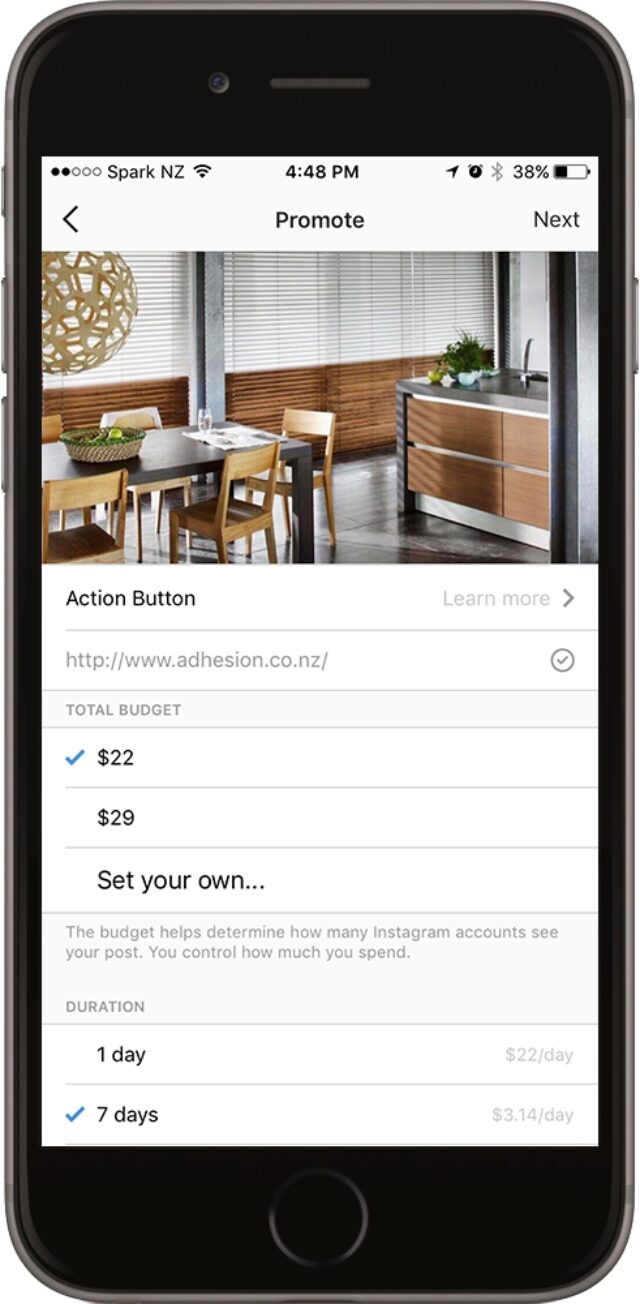Updated: Feb 11, 2019
Author: Tony Waldegrave

Yes, if you understand how to do it right. Advertising on Instagram is a relatively new thing for most NZ businesses, but it is becoming more popular. In fact, the number of users on Instagram grew three-fold between 2014 and 2016. Why? Well, in 2016, user engagement was 58% higher on Instagram than on Facebook. Instagram’s user engagement is so high because the content on Instagram is 'organic' and therefore not perceived by users as a sales-platform.
You only pay if you actually ‘promote’ your posts. When you promote a post, Instagram will recommend a budget based on the budgets used by businesses similar to yours. This will be similar to the cost of advertising in Facebook. For Instagram advertising, it's around $5-$10 per day for small to medium sized businesses. However, you are at liberty to set a low total budget of $10, and run the promotion for (let’s say) 10 days, equivalent to only $1/day. However, in that case, the number of people who see and click your ads will be low. The general rule, if the return on investment (ROI) is positive, think about increasing your budget a little, then re-test. Like Facebook, Instagram offers analytics reporting about Likes, Comments, Saves, Impressions, Reach and Engagement.

Although Instagram’s engagement is the highest, it is also slowly decreasing. This is because more and more advertisers are jumping on the platform without understanding Instagram’s users. Today’s most successful Instagram advertisers know not to be sales-focused and instead focus on making users fall in love with their brand’s story. Don’t think it’s worth? Or maybe you think Instagram doesn’t sound very appropriate for your business? Think again.
According to Pew Research Centre's 2016 Instagram Demographics Update, 32% of all internet users are active on Instagram (currently the second most popular social media behind Facebook). 26% of all males on the internet use Instagram, compared to 38% of all females (even though there's more female users, that's still over a quarter of all males!). 59% of people aged 18 to 29 years old use Instagram, 33% of 30 to 49 year olds use Instagram, and 18% of 50 to 64 year olds use Instagram (Instagram isn't just a platform for students). 27% of people who have not attended any university use Instagram, 37% of people who have attended some university, and 33% had at least graduated from university (a reasonable shift towards 'more educated' people). 38% of internet users who earn less than US$30,000/year use Instagram, 32% of people between US$30,000/year and US$50,000/year, 32% of people between US$50,000/year and US$75,000/year, and 31% of people over US$75,000/year (income doesn't hugely correlate with Instagram usage). 39% of urban residents are users, 28% of suburban residents and 31% of rural residents (it seems that, as long as people have some access to internet, they will use Instagram regardless of where they live — of course there is a slight shift towards urban residents who have access to faster broadband speeds).
First thing’s first, Instagram is over 95% mobile. That means, regardless what your business, products or services are, if your customers are smartphone users, you need to consider building a presence on Instagram.
People are buying more online, and Instagram is looking into becoming a big e-commerce platform. Late in 2016, Instagram experimented with ecommerce by allowing a bunch of businesses to tag products that appeared in their photos and videos. When users tap on a product, they could be taken to a business’ store within Instagram where they could view products in more detail and make purchases. Although this feature is not widely available yet, you can expect it will have many functional similarities to the shopping sections currently available for business pages on Facebook.
Our reputation goes hand-in-hand with our team’s dedication to best practice. As a registered Premier Google Partner, our team refreshes our certifications every 12 months — A tradition we started over a decade ago. To stay ahead, we are always looking forward to upcoming certifications for online advertising, website development and search engine optimisation.
Blog • Terms • Privacy • 110 Mount Eden Rd, Mount Eden, Auckland 1024 • Mon–Fri 8:30am–5pm
© 2007-2020 Adhesion